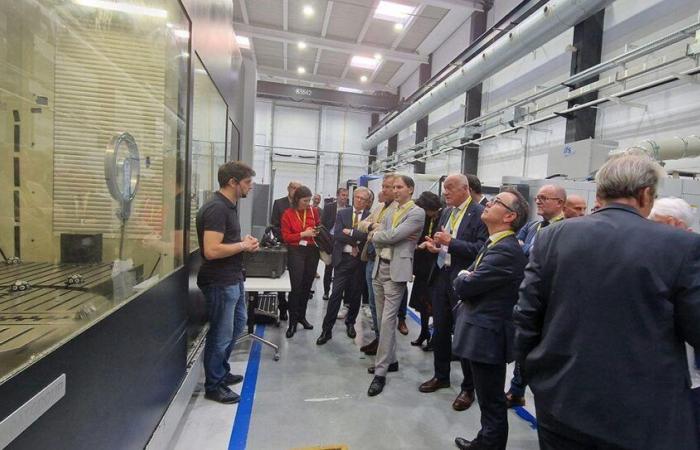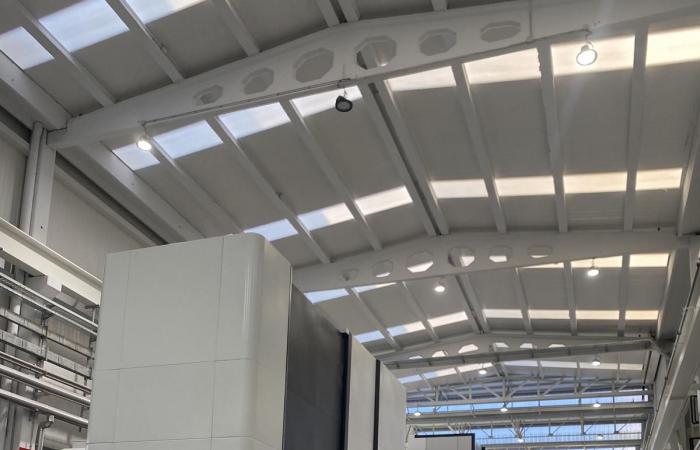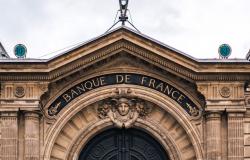AAt the foot of the Pyrenean foothills, the landscape offers a grandiose spectacle. Almost fluorescent green meadows adorn the hills overlooked by oak and beech forests. It is in the heart of this bucolic environment that the major industrial complex which is the pride of this Basque region, Mondragon, has developed. The figures are dizzying when we talk about this heavyweight of the local economy whose reputation radiates throughout the world. The group has an annual turnover of 12 billion euros, employs 70,000 people and brings together nearly 200 companies with a unique model, that of an XXL cooperative that never ceases to amaze and inspire. That day, Danobat, one of the group's entities specializing in machine tools for aeronautics, automobiles and energy, welcomed a delegation from Nouvelle-Aquitaine to Bilbao. As part of its economic development missions, the Region organized a visit for around twenty business leaders from New Aquitaine and a few journalists (1).
The Neo-Aquitanians visited Danobat, one of the jewels of Mondragon.
Euroregion
The presentation of the Mondragon model is provided by Ander Etxeberria, responsible for promotion for the cooperative. After the Neo-Aquitanians, he will continue with another visit to the site for a group of Koreans, the next day, he will receive a delegation from Brazil. Because Mondragon’s impressive success fascinates the whole world.
The story is well rehearsed. It began in 1941 when José Maria Arizmendiarrieta, a Catholic priest, created a first professional school. A unifier, he encouraged entrepreneurship among young people in the region and founded the Ulgor industrial cooperative in 1956, a company where the bosses were the workers. Today, Mondragon brings together 80 cooperatives located in the Basque Country and Navarre and around a hundred companies with different statuses throughout the world. Its activities extend far beyond the industrial sector, towards finance and distribution. The group notably owns the Eroski cooperative supermarket chain and the Caja Laboral bank.
80% members
From the outset, Ander Etxeberria defuses fantasies and reassures the leaders. “At Mondragon, we make a profit. You have to earn money. The question is what do we do with it? » 10% of profits are donated to social work and 60% are put aside for investment. This makes it possible in particular to develop new patents and to comply with standards.
“The Mondragon area is one of the places in the world where there is the least inequality”
“The Mondragon area is where incomes are the highest in Spain and where there is the least unemployment,” continues the representative of the cooperative. It is one of the places in the world where there is the least inequality. » In fact, within the cooperative where the system has hardly changed since the beginning, the first objective remains job creation, salaries range from 1 to 6 and 80% of employees are members. A model that “gives a headache” to Exequiel Cano Lanza. The naval architect specializing in yachts, based in the Arcachon basin, finds the model very interesting, but wonders: “Who are we going to sell boats to if there are no more rich people? »
S. L.
Danobat machine tools reach impressive sizes.
The discovery of Mondragon shook up neo-Aquitaine business leaders. Almost none of them are familiar with the cooperative model and this visit raises a lot of questions within the ranks. In the huge production hangar, everyone admires the cutting-edge technology that Danobat is developing with its impressive machine tools – 8 meters high and 50 tons. They are used to manufacture part of the wings of the Airbus A 320 and A 350, rotors for Dassault, and even parts for wind turbines.
Once they leave this factory of the future where everything shines, they want to understand. How could a company which belongs to its employees, which has its own social security system allowing retirement at 60 years old compared to 67 years old elsewhere in Spain, and which does not lay off workers, rise to such a level? level ? A headache for these bosses fed the liberal model.
Solidarity cooperatives
Being a constellation of solidarity cooperatives is Mondragon’s strength. When one of the group's entities experiences difficulties, it benefits from the help of the others. This is what partly allowed it to absorb the shock in 2014, during the liquidation of Fagor which employed 5,642 people in Spain, France (Fagor Brandt), Poland and Morocco. Basque member employees were able to relocate within the corporation. This was not the case for those employed in overseas subsidiaries. One of the limits of the system.
(1) This report was produced as part of a trip supported by the Nouvelle-Aquitaine Regional Council, without editorial intervention, in accordance with the “Sud Ouest” charter.







